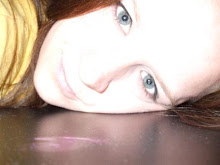A geoglyph is a drawing on the ground, or a design produced on the ground, either by arranging clasts (stones, stone fragments, gravel or earth) to create a positive geoglyph (stone arrangement/alignment, petroform, earth mound) or by removing patinated clasts to expose unpatinated ground (negative geoglyph).

One of the most famous negative geoglyphs is the Nazca Lines in Peru. Other areas with geoglyphs include Western Australia and parts of the Great Basin Desert in SW United States. Hill figures, turf mazes and the stone-lined labyrinths of Scandinavia, Iceland, Lappland and the former Soviet Union are types of geoglyphs. The largest geoglyph is the Marree Man in South Australia.

The Nazca Lines are a series of geoglyphs located in the Nazca Desert, a high arid plateau that stretches 53 miles or more than 80 kilometers between the towns of Nazca and Palpa on the Pampas de Jumana in Peru. They were created by the Nazca culture between 200 BC and 700 AD. There are hundreds of individual figures, ranging in complexity from simple lines to stylized hummingbirds, spiders, monkeys, fishes, sharks, llamas and lizards.

Since the discovery of the geoglyphs, various theories have been proposed regarding the methods and motivations underlying the lines' construction. The archaeological explanation as to who made them and how is widely disputed but many believe the Nazca people made the lines using simple tools and surveying equipment. Wooden stakes in the ground at the end of some lines (which were used to carbon-date the figures) and ceramics found on the surface support this theory. Furthermore, researchers such as Joe Nickell of the University of Kentucky, have reproduced, without aerial supervision, the figures using the technology available to the Nazca people of the time. With careful planning and simple technologies, a small team of individuals could recreate even the largest figures within a couple of days.

This is a human geoglyph, the people stood around with candles to for a shape big enough to see from the air.
OK OK now what did I do with that? I made my very own mini geoglyph! My dad wasn't happy at first but he let it go.
OK OK now what did I do with that? I made my very own mini geoglyph! My dad wasn't happy at first but he let it go.

This was so much harder than what I thought it would be. I found these giant roots I had to dig up. I also got a huge pile of dirt that I scooped out of it!



But after all the work was done it really was pretty cool!

I think I learned more about it all than I even realized. When I made a more planned dig on the left side, it came out more even than when I had first started on the right side where it is crooked. It certainly wasn't an easy thing to do!

2 comments:
That is awesome! At first I thought it was small, but then I saw the final picture where you are actually laying in it!!!
That is so awesome! there are just so many things to say about it...
it reminds me of the book "holes" which i think is a great story...
digging brings out the kid in me... and i can remember trying to dig a hole to china. and my first dog had her first puppies in a hole that she dug... and hobbits live in cozy holes. digging is important in irrigation and brings the water of life to deserts and i know that's not really what your project is all about, and i've said nothing about the heart shape, but to me, it is more about the digging.
it's like you put a moat around your family. symbolism of protection... aww your family is protected by love :)
great job :)
Post a Comment